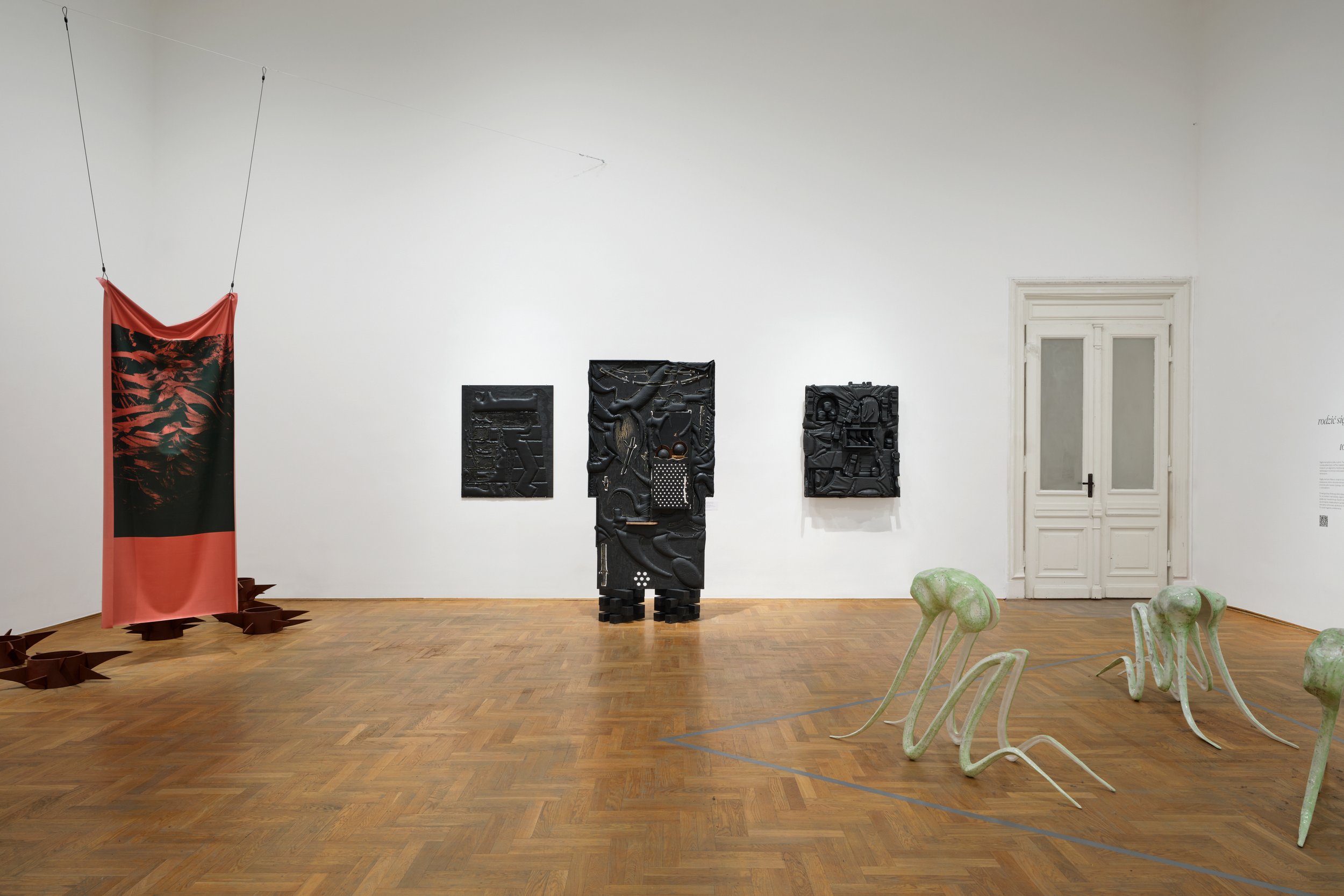
does the rising sun affright, zachęta - National gallery of art,
Warsaw, Poland, 2024
Does The Rising Sun Affright (group exhibition)
Venue Zachęta - National Gallery of Art, Warsaw, Poland
Curated by Aleksandra Skowrońska
Date March 15 - May 26, 2024
Photography Bartosz Zalewski and Daniel Rumiancew














Press Release
It encourages and compels us to think about our connections with non-human and beyond-human entities: from metal deposits and radiation to yeast, mussels or air. It does not favour humans. It does not lend itself to being romanticised or fetishised, tamed or objectified. Developed by Timothy Morton, dark ecology is a concept that highlights the mystery and complexity of ecological problems, often beyond the reach of our (human) consciousness. It is a philosophical tool that allows us to examine our relationship with the world, which is undergoing increasingly rapid and difficult to understand changes. It enables us to find our way in the dark — in the spectrum of strange and incomprehensible transformations that manifest themselves in events of varying scales: from the whole planet to the individual human body.
The artists invited to participate in the exhibition, whose biographies and memories are rooted in the moment of transition, themselves embody the category of spectrum, this time across generations. On the one hand, they reach the end of the ‘long 20th century’ (to quote the sociologist Giovanni Arrighi) — a period of global capitalist expansion and extractivism of the planet, its deposits or biosphere; on the other hand, they are part of the 21st century ecological awareness and narratives of ‘planetary care’ or the concept of ‘care for post-nature’ formulated by the researcher Ewa Bińczyk, often accompanied by a sense of helplessness of the individual deprived of sufficient agency.
Individual responses to the aforementioned transition can be seen in creative practices — in working methods and choice of materials (post-industrial waste and objects of everyday use), in references to organic themes, in collaborations with non-human, technological and organic entities, in the use of categories of strangeness, mutation and adaptation, or in the introduction of ironic or erotic motifs. This involves attempts to develop emancipatory strategies or to articulate an attitude towards crisis and apathy.
Artistic reflection is not limited to the contemplation of (dark) ecology. It transcends the assumed point of departure and seeks to reformulate the normative concepts and categories necessary in a time of transition — identity, politics, time, matter, future, humankind, and life.
The title of the exhibition is deceptive and, like the entities in Morton’s philosophy, conceals its intentions and semantic scope. The phrase, taken from a poem by William Blake and translated into Polish by Zygmunt Kubiak, carries meanings related to the transition between night and day, darkness and light, filled with a timid hope for the future.
Cezary Poniatowski's artistic practice can be described as one of shifting - from the safe, domesticated and familiar to the uncanny and disturbing. The black reliefs evoke totemic and zombie-like associations - but not only that. The viewer's attention is drawn by the choice of materials, especially leatherette or synthetic leather, which stand out as inherently paradoxical and liminal media. Beneath the surface of the reliefs lies an indescribable force - a pulsating, centrifugal energy of pain, trauma, anxiety and transformation.
In the sardonic “Ether” the artist uses reclaimed carpets - objects that carry the past, both metaphorically and materially, collecting dust and dirt. The presentation of the carpets from their underside is an impulse to play with and question the division between exterior and interior, suggesting instead to focus on semi-permeability, filtration, and flow.
Aleksandra Skowrońska